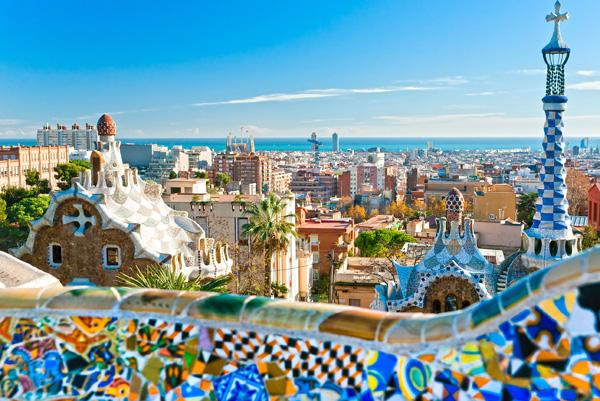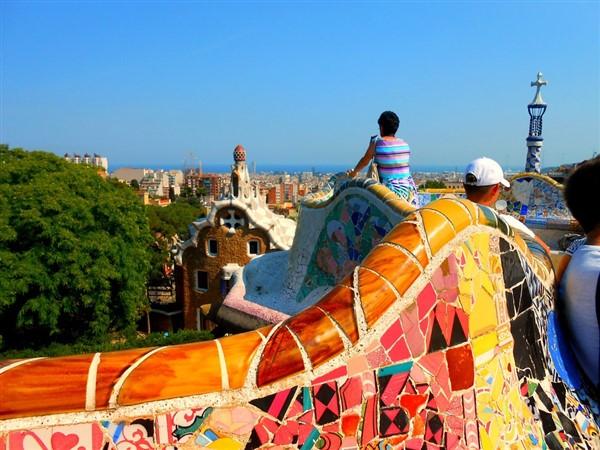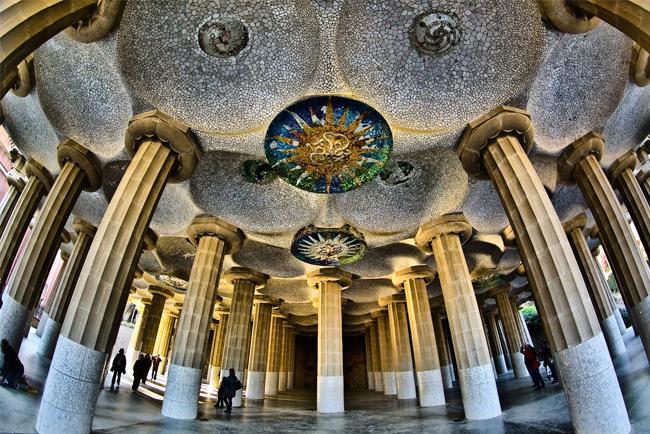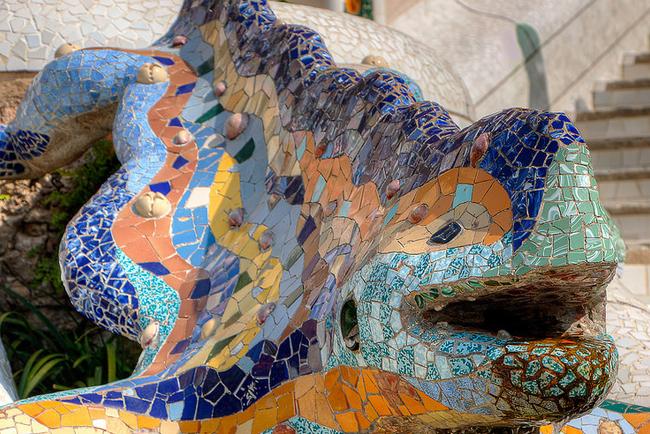Online bookings
24 hours a day
0044 (0) 20 3239 1595
English Phone
Mon-Fri: 8-16:00 GMT
Customer Service
One of Barcelona's most famous attractions is undoubtedly Park Güell, the spectacular park which was created by the architectural genius of Antoni Gaudí and which you can visit by buying entry tickets online.

Although these two names are very famous, not everyone knows the history that is hidden behind one of the most popular tourist destinations for visitors to Barcelona.
Eusebi Güell was a well known Catalan businessman who fell in love with the works of the architect from Barcelona during the 1878 Universal Exhibition in Paris which led to him commissioning a series of personal works until Gaudí eventually received the commission to build the magnificent Park Güell in 1900. The initial project envisioned the development of an urbanization for wealthy families, who would benefit from a healthy environment on the outskirts of the city whilst enjoying spectacular views towards the sea due to its elevated position. Gaudí's intention was to create an atmosphere that was reminiscent of the British residential parks and for this reason, he called it by the English name of "Park." The architect was respectful of the existing vegetation but also introduced new Mediterranean species which required little water and devised an optimal irrigation system in order to avoid soil erosion whilst also satisfying the needs of the local inhabitants. Among the first residents in the park's houses,were Gaudí and Güell themselves, but the work was put on hold in 1914 as a result of the complex conditions of sale for the various parcels of land which was typical of the bureaucracy of the time and also as a result of the absence of an adequate transport system. Due to these factors, the park initially became a private garden, then in 1926 it became a municipal park; the Güell family home became a public school and in 1963, Gaudí's friends transformed his home into what is now the Gaudí Musuem.

Entry tickets to Park Güell will enable you to visit the entire vast area of the park, excluding Antoni Gaudí's house. The cost of an adult ticket is €7.50, children from 0 - 6 years enter free of charge and children under 12 and pensioners are charged €5.50 per person. Park Güell is open every day of the week from 08:30 until 20:30. If you want to further enrich your experience of the park, you should choose to visit it with an official guide who speaks your language. In this case, the tickets are not included in the guided tour. Our recommendation is to book the guide first and then later, in the email confirmation of your booking, you will also receive our recommendations regarding the best times at which to book your entry to the park. You should calculate the time that you will need to get there and we can then suggest the best time to visit: fill out the form on the web page Private English speaking Guide .
Nowadays the park is easily accessible via public transport: on the underground's Green Line L3 getting off at Vallcarca or Lesseps, or with the city bus (routes H6, 32, 24 and 92). Even the Barcelona Tourist Bus stops outside this important venue and the stop is actually called Park Güell. The access times for the park depend on the time of year: in winter, you can visit from 08:30 until 21:30 and at other times of the year from 08:00 to 20:30. The cost of an individual entry ticket is €10.00 if the booking has been made online and there is an added discount for children, pensioners and the disabled. Not everybody knows that, after closing time, it is possible to visit the park for free but this does mean that the splendid colors with which the park is decorated may appear a little less vivid but this is compensated for by the spectacular views of the city by night. For those who don't want to miss out on this experience in daylight but who still want to save money, it is also worth knowing that the outermost part of the park can be visited for free as the ticket office is centrally located. And finally, there are three entry points to Park Güell: the main entrance which is on Calle de Larrad, one on Carretera del Carmel and another on Pasaje de Sant Josep de la Muntanya. And so, every day, hundreds of tourist come to admire this site which, in 1984, was declared a UNESCO World Heritage Site in this wonderful city of Barcelona.
The main entrance to Park Güell is on the south side on Calle de Olot, from where you will catch your first glimpse of the spectacular vista that is provided by the main access staircase. This leads to the famous Hypostyle Room which is one of the park's most incredible attractions.
This is the building which was originally intended to house the market inside the confines of the small urbanization within the park. Its uniqueness is due to the 86 columns with which the room is structured, all of which are inspired by the Doric style.The outermost columns slope in an undulating movement which clearly contradicts the norms of classical architecture. This incredible effect, which was created by the architectural genius, Gaudí, gives the impression of movement and yet, at the same time, of structural strength. In the center of the room, the absence of any columns at certain points, creates a space that simulates three altars, almost as if this were a sacred place. The ceiling is formed of small domes which have been built according to the traditional Catalan technique and are adorned with original ceramic mosaic panels which were created by a trusted associate of Gaudí's, Josep M. Jujol. The columns in the Hypostyle Room are decorated by a ledge on which the undulating terrace begins. A system of internal channels collects rainwater that filters down from the main square, leading it to a large underground cistern which finds its outlet in the dragon's mouth on the staircase of the same name.


The boundary walls of the estate are made from rustic stone and are distinguished by details in ceramic and medallions that bear the park's name. The gates are made of iron, adorned with palm leave but they were not part of the original design but came from Casa Vicens. On both sides, there are two pavilions which were originally the reception area of the park: the one on the left was used as a reception area with a waiting room and a telephone kiosk. The one on the right was where the porter lived and is thus known as the Porter's Lodge. As with many of the attractions in Barcelona, and particularly when it comes to the houses built by Gaudí, the roofs that cover the buildings are of an unprecedented beauty, built in the typical Catalan style and covered with ceramic mosaics.
Resources:
My comments